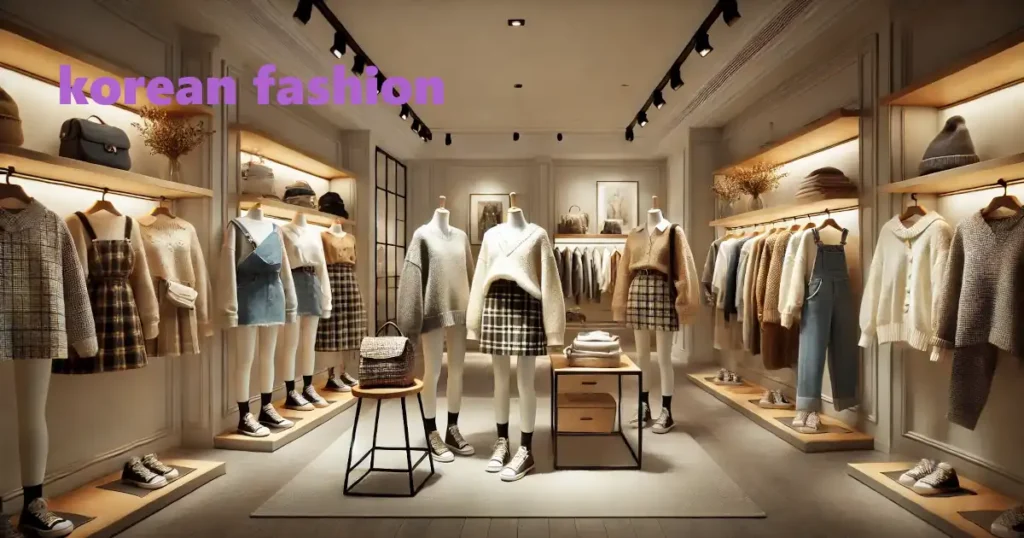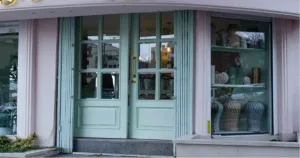1. Introduction to Korean Fashion
Korean fashion has steadily made its mark on the global stage, earning admiration for its unique blend of tradition and modernity. It’s more than just clothing; it’s a cultural phenomenon that has captivated fashion enthusiasts worldwide. With the rise of K-pop and K-dramas, Korean fashion has transcended borders, influencing trends across continents. This influence is not merely a fleeting trend but a reflection of Korea’s deep-rooted fashion culture, where style is a form of self-expression and a significant aspect of social identity.
Fashion in Korea is more than what meets the eye. It’s an integral part of the country’s culture, representing values, social norms, and historical influences. In a society where appearances are crucial, fashion becomes a tool to navigate and express individuality within a collective cultural framework. Whether the sleek, minimalist designs or the bold, eclectic streetwear, the Korean style has a distinctive flair that continues to shape global trends.
2. History and Evolution of Korean Fashion
Korean fashion has a rich history that reflects the nation’s cultural heritage and societal changes. One of the most iconic symbols of traditional Korean attire is the Hanbok, a garment with deep historical significance. The Hanbok, characterized by its vibrant colors and graceful lines, dates back to the Three Kingdoms period (57 BC – 668 AD). It was not just everyday wear but also a representation of one’s social status, occasion, and even season.
The Hanbok has evolved in modern times, finding new life in contemporary fashion. Designers have reinterpreted this traditional attire, blending it with modern aesthetics to create pieces that honor tradition while appealing to today’s fashion sensibilities. The Hanbok’s revival in contemporary fashion showcases the seamless blend of Korea’s past and present, making it a symbol of cultural pride.
The post-war era brought significant changes to Korean fashion, which was heavily influenced by Western styles. The influx of Western culture in the 1950s and 1980s introduced new fashion concepts that contrasted sharply with traditional attire. This period saw the emergence of tailored suits, dresses, and casual wear, quickly adapted to Korean society. However, rather than merely imitating Western styles, Korean designers began to infuse these influences with local sensibilities, giving birth to what we now recognize as modern Korean street style.
3. Key Elements of Korean Fashion
Korean fashion is distinguished by several key elements that set it apart from other global fashion trends. One of the most prominent characteristics is minimalism with a twist. Korean style often embraces neutral tones and clean lines, focusing on simplicity. However, this minimalism is rarely plain or boring. Designers incorporate subtle details and unique cuts that add depth and interest to the garments. This approach reflects the Korean aesthetic of understated elegance, where less is often more.
Layering is another hallmark of Korean fashion. Koreans have mastered the art of layering, creating looks that are both practical and stylish. By mixing and matching different pieces, they achieve a balanced yet eclectic look that feels effortless. This technique allows for a great deal of creativity, as it encourages individuals to experiment with various textures, patterns, and silhouettes.
Accessories play a crucial role in completing the Korean fashion look. Whether it’s statement bags, hats, or jewelry, accessories add personality and flair to an outfit. In Korean style, the right accessory can transform a simple outfit into something extraordinary, making it a key element in personal style.
4. Popular Korean Fashion Trends
K-pop idol fashion is perhaps one of the most influential trends in Korean fashion. The impact of K-pop idols on everyday fashion cannot be overstated. These idols are not just musicians; they are trendsetters whose style is emulated by millions of fans worldwide. From the bold, colorful outfits seen on stage to the more casual, street-inspired looks off-stage, K-pop idols continuously shape fashion trends. Iconic styles, such as oversized sweaters, platform shoes, and eye-catching accessories, have become staples in Korean style, thanks to their popularity among idols.
Korean streetwear is another significant trend that has gained international recognition. Characterized by its bold, edgy style, Korean streetwear often combines elements of hip-hop culture with traditional Korean motifs. Influential streetwear brands in Korea, such as 87MM and Ader Error, have become synonymous with this trend, offering pieces that are both avant-garde and wearable. The streetwear scene in Korea reflects the country’s youthful energy and its ability to push fashion boundaries.
Gender-neutral fashion is also making waves in Korea, as more designers and consumers embrace clothing that transcends traditional gender norms. This trend reflects a broader societal shift towards inclusivity and diversity. Unisex fashion is now widely accepted in Korea, with many brands offering clothing that can be worn by anyone, regardless of gender. This approach not only challenges conventional fashion norms but also promotes a more fluid and open-minded approach to personal style.
The preppy style, inspired by school uniforms, has also gained popularity in Korea. This trend is characterized by key pieces such as plaid skirts, oversized sweaters, and loafers. The preppy look is often associated with a youthful, innocent charm, making it a favorite among young fashion enthusiasts. Despite its simplicity, the preppy style allows for a great deal of creativity as individuals mix and match pieces to create their own unique take on the trend.
Athleisure, a trend that combines comfort with style, is another staple of Korean fashion. As fitness and wellness have become increasingly important in Korean society, so too has the demand for clothing that is both functional and fashionable. Athleisure pieces, such as joggers, hoodies, and sneakers, have become wardrobe essentials for many Koreans, reflecting a lifestyle that values health and style.
5. Korean Fashion Designers to Know
Several Korean fashion designers have made significant contributions to the industry, both domestically and internationally. One such brand is Andersson Bell, known for its unique blend of Scandinavian minimalism and Korean streetwear. The brand’s signature styles often feature clean lines, neutral tones, and unexpected details, making it a favorite among fashion-forward individuals.
PushBUTTON is another brand that has redefined Korean style with its quirky and bold designs. Founded by former K-pop idol Seung Gun Park, PushBUTTON is known for its playful, experimental approach to fashion. The brand’s collections often feature oversized silhouettes, vibrant colors, and unconventional materials, challenging traditional notions of style.
Charm’s is a brand that has gained popularity among youth and influencers for its modern take on streetwear. Combining comfort with style, Charm’s offers pieces that are both trendy and versatile. The brand’s popularity among young Koreans reflects the growing influence of streetwear in the country’s fashion landscape.
Blindness is an avant-garde fashion brand known for its experimental and conceptual approach to design. The brand’s collections often feature intricate detailing, unconventional silhouettes, and a mix of textures, creating pieces that are both artistic and wearable. Blindness has gained international recognition for its innovative designs, making it one of the most exciting brands to watch in Korean fashion.
6. Korean Fashion in the Global Market
The global expansion of Korean fashion brands has been nothing short of remarkable. Many Korean brands have successfully entered Western markets, bringing their unique style and perspective to a broader audience. Brands like Gentle Monster, known for its avant-garde eyewear, and Stylenanda, a leading fashion and beauty brand, have become household names in countries worldwide.
Korean fashion influencers have also played a significant role in driving global trends. Social media platforms like Instagram and YouTube have allowed these influencers to reach a global audience, sharing their personal style and promoting Korean fashion brands. Influencers like Irene Kim and Park Sora have amassed millions of followers, making them powerful voices in the fashion industry.
Collaborations between Korean designers and international brands have further solidified Korea’s place in the global fashion market. These cross-cultural exchanges have resulted in collections that blend Korean aesthetics with Western design principles, creating unique pieces that appeal to a diverse audience. Such collaborations have not only increased the visibility of Korean style but have also fostered a greater appreciation for its innovative and eclectic style.
7. Sustainability in Korean Fashion
As sustainability becomes an increasingly important issue in the fashion industry, Korean fashion is also beginning to embrace more eco-friendly practices. There is a growing awareness of the need for sustainable fashion, with many brands adopting ethical production methods and using eco-friendly materials. Brands like Recode, which repurposes discarded materials to create new garments, lead this movement.
However, sustainability in Korean fashion is not without its challenges. The industry still faces obstacles, such as the high cost of sustainable materials and the need to balance profitability with ethical practices. Despite these challenges, there is a clear trend towards greater sustainability in Korean style as consumers become more conscious of the environmental impact of their clothing choices.
The future of sustainability in Korean fashion looks promising, with more brands and designers committed to creating environmentally friendly products. As the demand for sustainable fashion grows, it is likely that we will see even more innovation and creativity in this area.
8. How to Incorporate Korean Fashion into Your Wardrobe
Incorporating Korean fashion into your wardrobe is easier than you might think. One of the best ways to start is by adopting key trends discussed earlier. Minimalist pieces with a twist, such as neutral-toned shirts with unique cuts or layered outfits that combine different textures and patterns, are great starting points.
Mixing Korean with your personal style is also a key aspect of making this trend work for you. While it’s easy to admire the boldness of Korean streetwear or the elegance of traditional Hanbok-inspired pieces, the key is to find elements that resonate with your own style and personality. This could mean pairing a statement piece like a Korean-inspired oversized sweater with your favourite jeans or adding a unique accessory to an otherwise simple outfit.
Shopping for authentic Korean style has also become more accessible, thanks to online platforms that cater to international customers. Websites like YesStyle and W Concept offer a wide range of Korean fashion items, from clothing to accessories, making exploring and incorporating these trends into your wardrobe easy.
9. Conclusion
The fashion industry in Korea is dynamic and ever-evolving, making a significant impact on the global stage. From its rich historical roots in traditional attire like the Hanbok to its modern-day influence through K-pop and streetwear, it represents a unique blend of tradition and innovation. As the industry grows, it will likely keep setting trends and inspiring fashion enthusiasts worldwide.
Embracing this style is more than just following a trend; it’s about appreciating a culture that values individuality and community. Whether you’re drawn to minimalist elegance, bold streetwear, or playful and experimental designs, there’s something in this fashion for everyone. As its global influence expands, now is the perfect time to explore and incorporate these trends into your style.
Frequently Asked Questions (FAQs)
What makes Korean fashion unique compared to other styles?
Korean fashion stands out due to its blend of minimalist design with unique, subtle details and its ability to seamlessly mix traditional and modern elements.
How has K-pop influenced global fashion trends?
K-pop idols are major trendsetters, with their distinctive styles influencing everything from streetwear to high fashion, making K-pop a global fashion phenomenon.
What are some essential pieces to start incorporating Korean fashion into my wardrobe?
Start with minimalist pieces, such as neutral-toned tops and oversized sweaters, and experiment with layering and statement accessories.
Are there any popular Korean fashion brands known for sustainability?
Yes, brands like Recode focus on sustainability using repurposed materials and ethical production practices.
How can I shop for authentic Korean fashion online?
Websites like YesStyle and W Concept offer a wide range of authentic Korean fashion items, making incorporating these trends into your wardrobe easy.
Is Korean fashion suitable for all body types?
Absolutely, Korean fashion emphasizes versatility, with many styles being gender-neutral and designed to flatter various body shapes and sizes.







